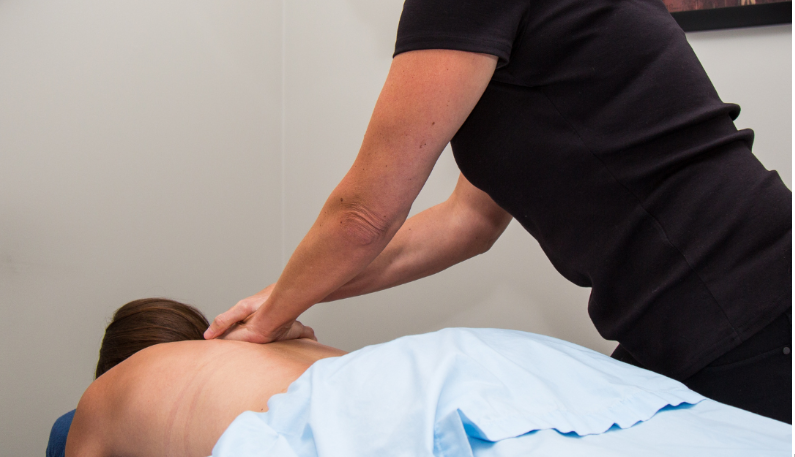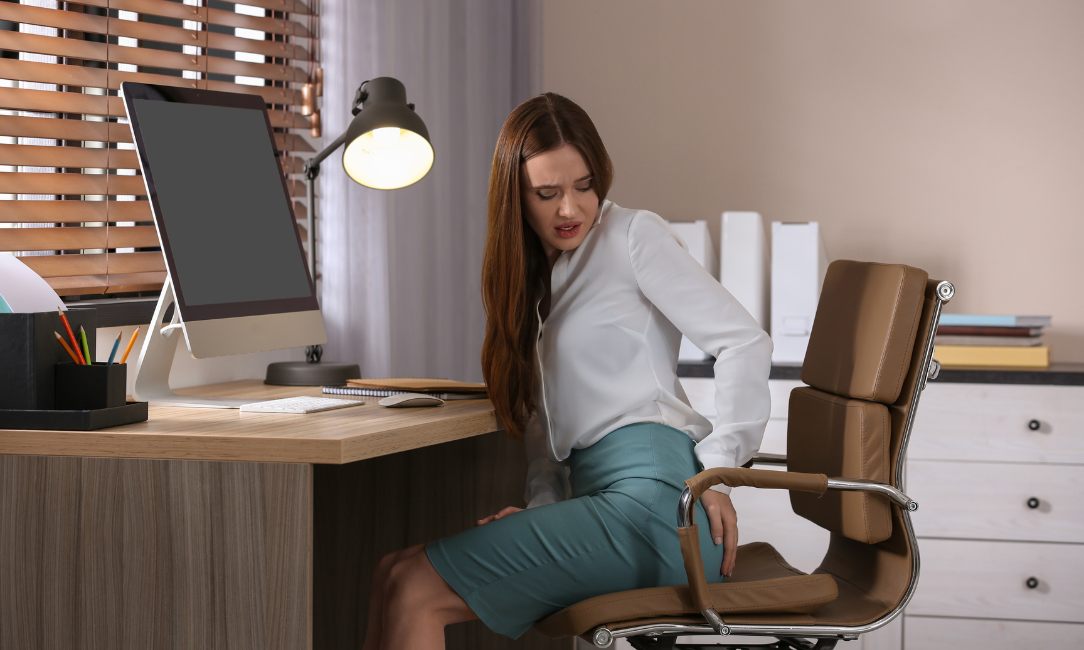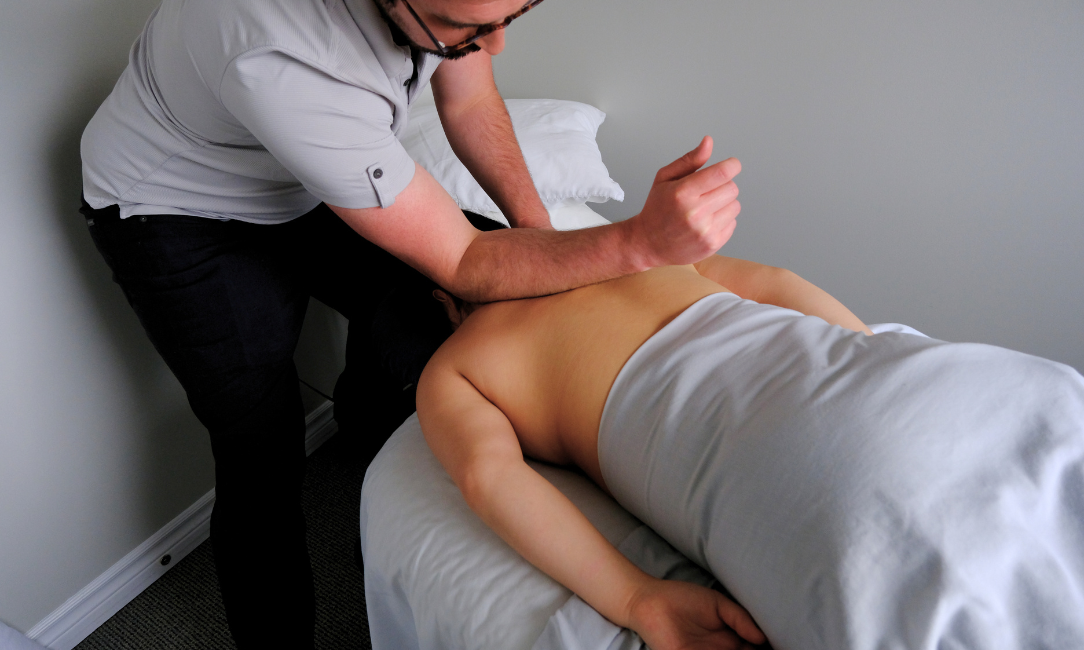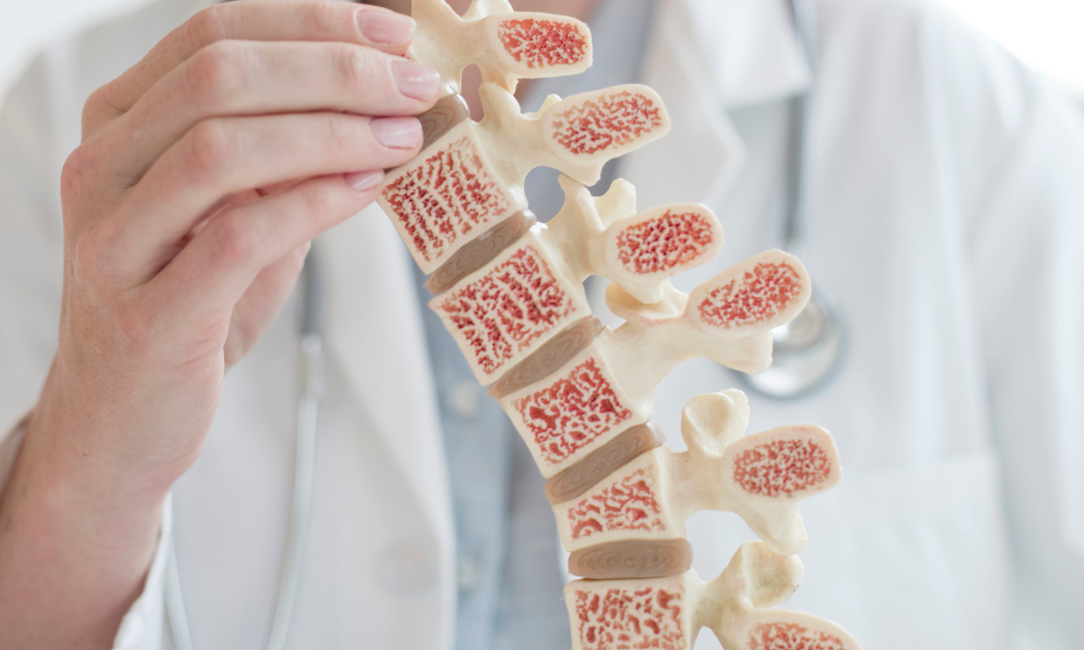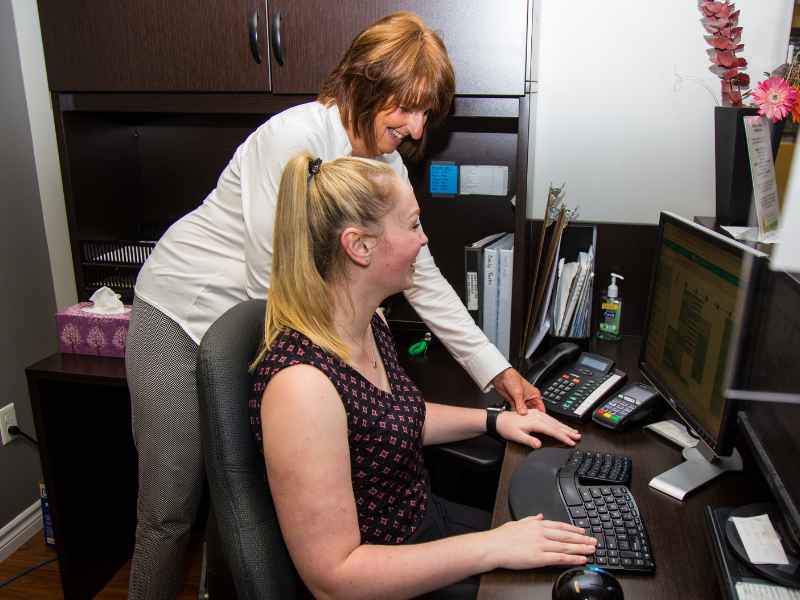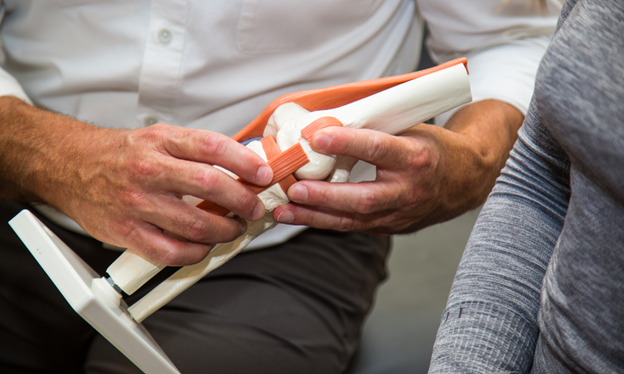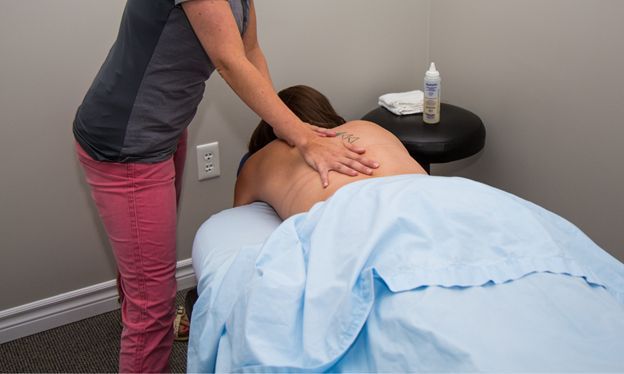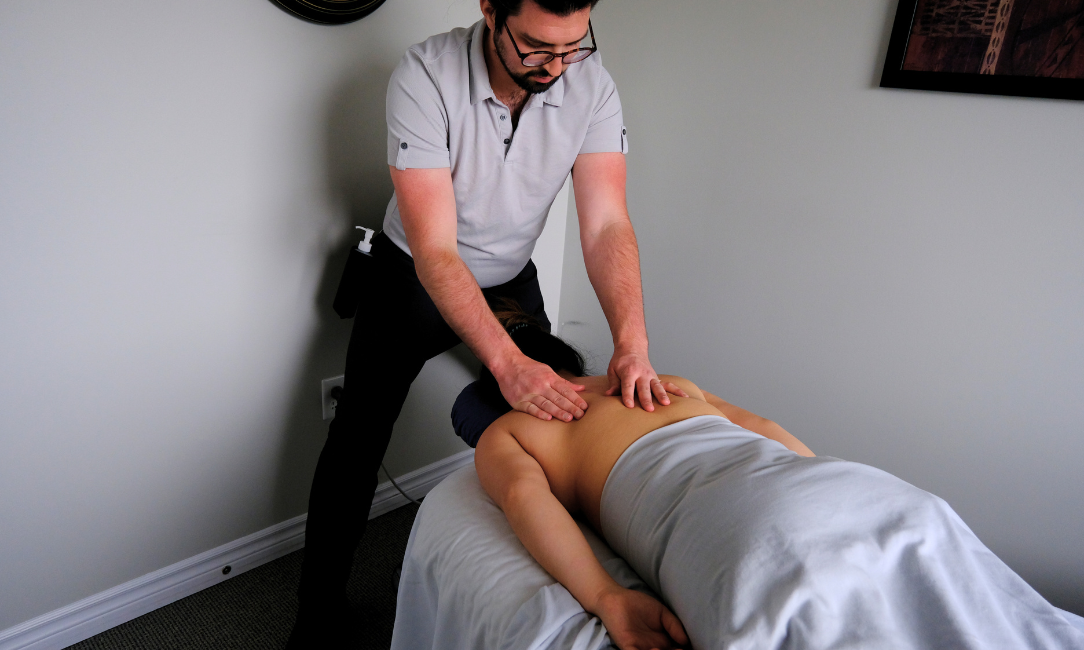What Is Golfer's Elbow? Effective Treatment and Prevention Strategies
Golf season is here, so you don’t want to be stuck in the clubhouse with elbow pain! Golfer’s elbow, also known as medial epicondylitis can make it difficult to not only golf, but also throw a ball, weight train, use hand tools or carry something heavy.
Here at our clinic in Lower Sackville, we often see people who get back onto the golf course after several months off, and after a few games they start to feel an achy pain in the inner elbow. After an assessment, we usually determine the cause to be medial epicondylitis, aka golfer’s elbow. It can be frustrating, but with proper treatment, you can play pain free once again.
What Is Golfer’s Elbow?
Golfer’s elbow is inflammation of the tendons that attach to the inner (medial) side of the elbow. It is normally caused by overuse of the muscles that flex your hand to the inside of your arm, and can be caused by many different sports or activities, not just golf. Overuse causes tendinitis at the attachment site, which in turn causes pain.
What Are The Symptoms of Golfer’s Elbow?
Symptoms of medial epicondylitis include:
- Pain at the inside (medial) aspect of the elbow, sometimes extending down your forearm
- Weakness at your wrist
- Difficulty making a fist
- Stiffness at the elbow
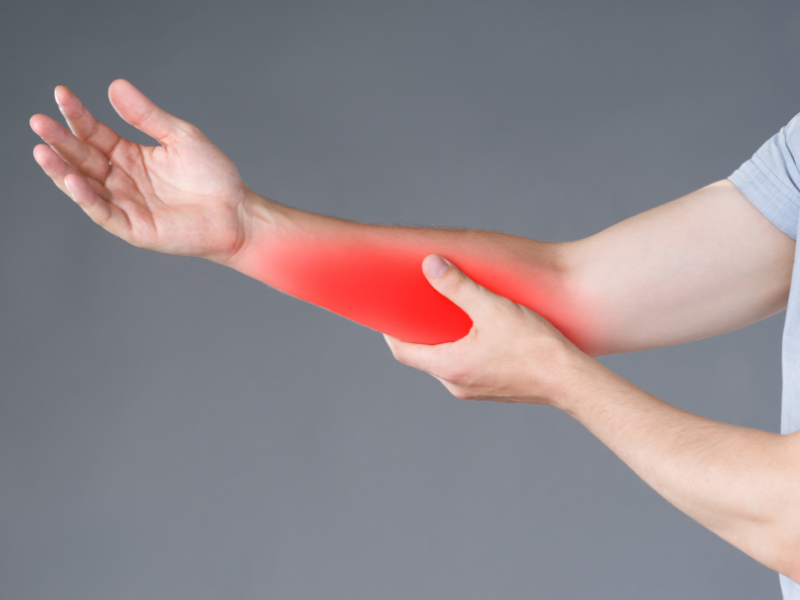
Golfer’s Elbow vs Tennis Elbow
You may think that this sounds similar to tennis elbow, and you’d be correct! Tennis elbow occurs at the lateral, or outside, aspect of the elbow instead of the inner aspect, otherwise the symptoms are very similar.
How Can Physiotherapy & Massage Help Treat Golfer’s Elbow?
Both physiotherapy and massage therapy can help with the treatment of golfer’s elbow.
Physiotherapy can help with golfer’s elbow by helping to decrease inflammation and pain through manual therapy, interferential current, ultrasound, acupuncture and more. Your physiotherapist may also give you exercises to do at home, and training on body mechanics to help prevent the tendinitis from recurring.
Massage therapy can help through treating the muscles involved in the forearm, upper arm, and shoulders. Relaxing these tight muscles can help reduce pain.
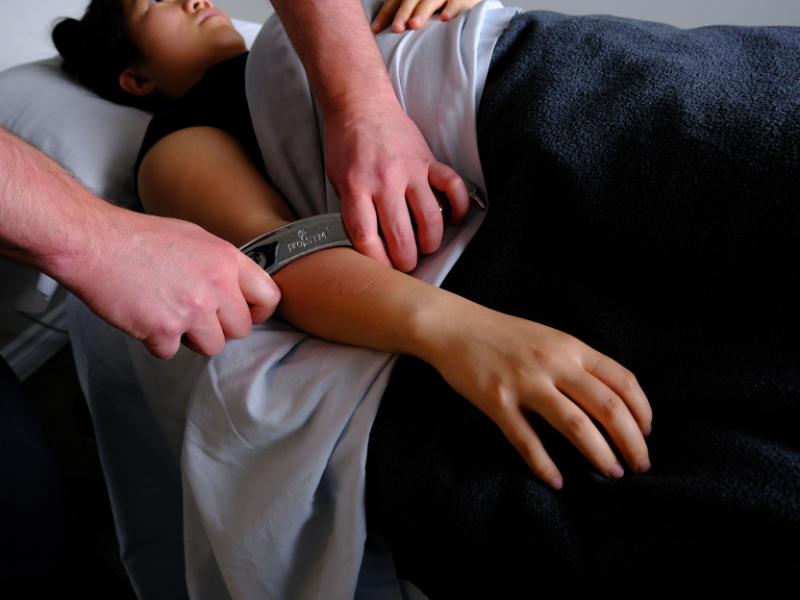
How To Prevent Golfer’s Elbow
If you’re concerned about inner elbow pain derailing your tee time, here are a few ways to prevent medial epicondylitis:
- Strengthen your forearm muscles. A physiotherapist can help prescribe exercises.
- Warm up before doing any activity, some walking or gentle stretching
- Make sure your form is correct, if you’re playing a sport, have someone check your form.
- Rest when you have pain. Don’t try to push through
- Switch to lighter graphite clubs
Inner Elbow Pain?
If you are experiencing inner elbow pain, or any elbow pain, make an appointment with one of our physiotherapists for an assessment. We will make sure the treatment is customized to your needs and goals.
Ready for an assessment?
Contact us at (902) 865-8100
FAQs
Does heat or ice help golfer’s elbow?
If you have new inner elbow pain, or increased pain after activity, you can use ice to help decrease inflammation. Use an ice-pack, wrapped in a towel for 15 minutes or less. If the pain is chronic, you can use heat to help relax the muscles. If you have questions, chat with your physio or massage therapist!
What mimics golfer’s elbow?
Other conditions that can cause inner elbow pain are cubital tunnel syndrome (entrapment of the ulnar nerve), or a ligament sprain. It’s important to get an assessment so you receive the proper treatment for your pain!
Will medial epicondylitis go away?
Yes, generally speaking with rest it can go away on its own without treatment. However physiotherapy and massage therapy can help speed up recovery time, and help prevent it from recurring.


The Role of Physiotherapy, Massage Therapy, and Occupational Therapy After Joint Replacement Surgery
